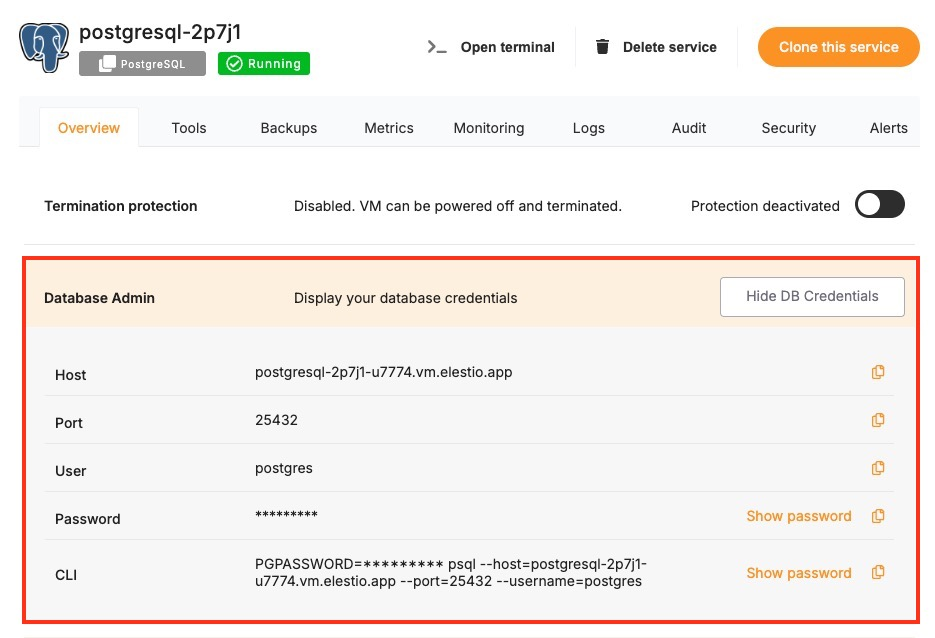Connecting with PHP
This guide explains how to establish a connection between a PHP application and a PostgreSQL database using the built-in PDO extension. It walks through the necessary setup, configuration, and execution of a simple SQL query.
Variables
To connect to a PostgreSQL database, you only need one environment variable — the connection URI. This URI contains all the necessary information like username, password, host, port, and database name.
| Variable | Description | Purpose |
|---|---|---|
| POSTGRESQL_URI | Full PostgreSQL connection string (from the Elestio service overview page) | Provides all necessary credentials and endpoint details in a single URI format. |
The URI will look like this:
postgresql://<USER>:<PASSWORD>@<HOST>:<PORT>/<DATABASE>You can find the details needed in the URI from the Elestio service overview details. Copy and replace the variables carefully in the URI example provided above.

Prerequisites
Install PHP
Check if PHP is installed by running:
php -vIf not installed, download and install it from https://www.php.net/downloads.php.
Code
Once all prerequisites are set up, create a new file named pg.php and add the following code and replace the POSTGRESQL_URI with actual link or in environment setup as you wish:
<?php
$db_url = "POSTGRESQL_URI";//Replace with actual URI
$db_parts = parse_url($db_url);
$dsn = "pgsql:host={$db_parts['host']};port={$db_parts['port']};dbname=Elestio";//Replace with your DB name
$pdo = new PDO($dsn, $db_parts['user'], $db_parts['pass']);
$version = $pdo->query("SELECT VERSION()")->fetchColumn();
echo $version;To execute the script, open the terminal or command prompt and navigate to the directory where pg.php. Once in the correct directory, run the script with the command
php pg.phpIf the connection is successful, the terminal will display output similar to:
PostgreSQL 16.8 (Debian 16.8-1.pgdg120+1) on x86_64-pc-linux-gnu, compiled by gcc (Debian 12.2.0-14) 12.2.0, 64-bit